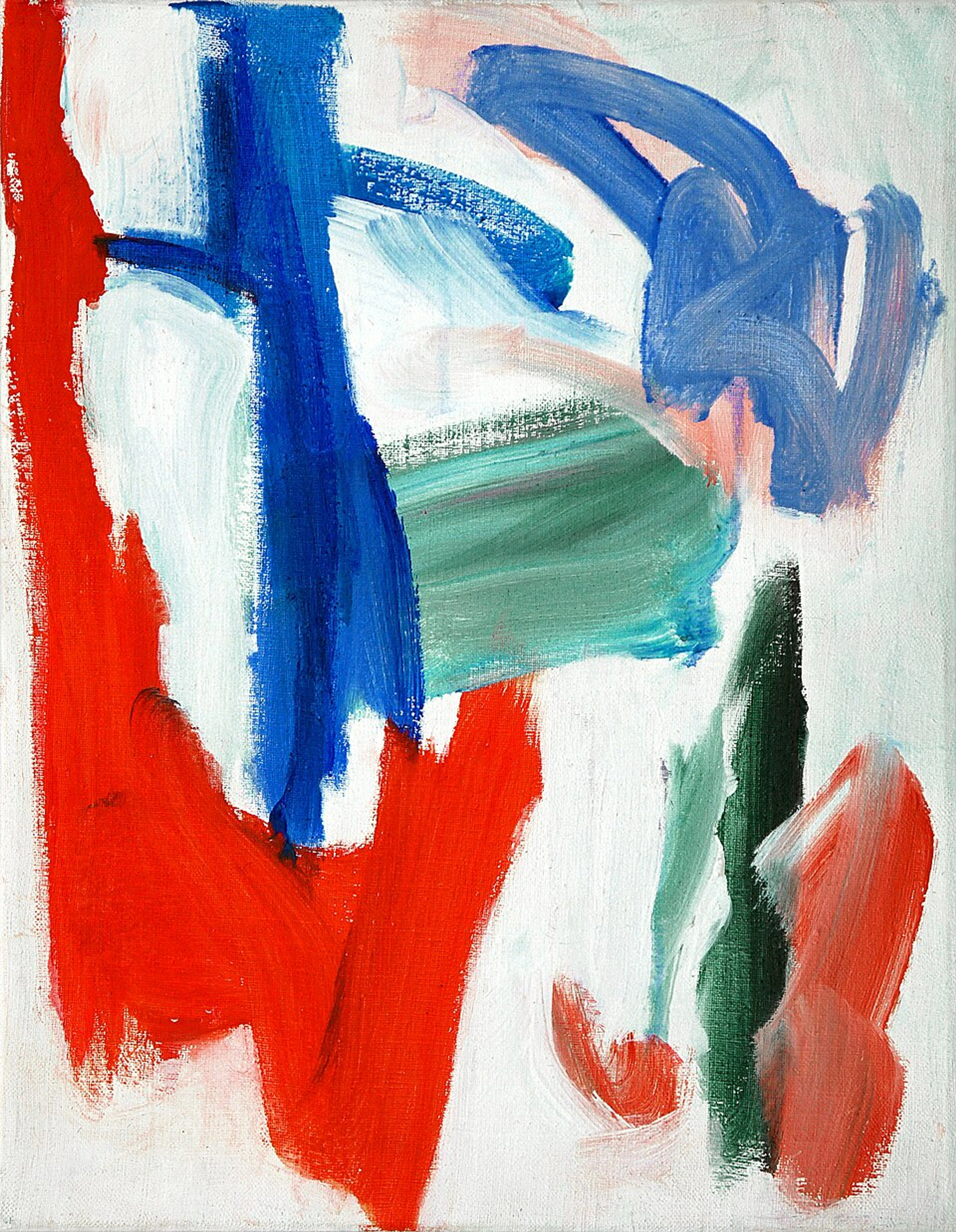
Nuance Beheersen: De Ziel van Kleur in Abstracte Kunst
Duik in de emotionele diepte van abstracte kunst door secundaire & tertiaire kleuren te verkennen. Leer over gelaagdheid, desaturatie en de psychologische impact van genuanceerde tinten met persoonlijke inzichten van de kunstenaar.
De Ziel van Kleur: Nuance & Diepte Meester Maken in Abstracte Werelden
Ik heb een levendige herinnering aan mijn kindertijd met zo'n goedkope aquarelset. Je weet wel, die met acht harde kleurblokjes, een dun plastic kwastje en die onmiskenbare geur van krijt en mogelijkheden. Ik begon altijd met de heldere, vrolijke primaire kleuren: het zonnige geel, het brandweerwagenrood, het hemelsblauw. Ze waren luid, eenvoudig en eerlijk. Maar de echte magie, het deel dat me echt fascineerde, gebeurde in de troebele plasjes op het plastic deksel waar de kleuren in elkaar overvloeiden. Een vreemd, moerassig groen. Een onverwacht, stoffig paars. Een bruinachtig oranje dat echter aanvoelde dan de pure kleuren in hun bakjes. Deze vroege verkenning van modderige plasjes was, onbewust, mijn eerste les in wat de basis van mijn artistieke filosofie zou worden – een diepe waardering voor de nuance en complexiteit verborgen in gemengde tinten. Deze kinderlijke fascinatie voor de gemengde kleuren op mijn palet heeft, geloof ik, mijn hele artistieke filosofie als volwassene gevormd. Ons wordt geleerd dat primaire kleuren de helden zijn, de hoofdrolspelers van het kleurverhaal. Ze zijn luid, eenvoudig, eerlijk. Maar voor mij ligt de ziel van een schilderij, zijn diepste geheimen en meest complexe emoties, in de bijrollen: de secundaire kleuren en tertiaire kleuren. Het is bijna alsof de primaire kleuren de enthousiaste, soms naïeve, jonge hoofdpersonen zijn, terwijl de secundaire en tertiaire kleuren de door de wereld getekende personages zijn met de beste achtergrondverhalen, degenen die echt hebben geleefd en iets diepgaands te vertellen hebben. Hun taal leren spreken veranderde alles voor mij, het verschoven mijn hele artistieke filosofie en ontsloot een nieuwe dimensie van diepte en subtiele emotionele resonantie in mijn abstracte werk.
Waar Hebben We Het Eigenlijk Over? Een Snelle (en Pijnloze) Opfriscursus
Voordat ik verdwaal in poëtische ontboezemingen – een gevaarlijke gewoonte, geloof me – laten we ervoor zorgen dat we op dezelfde golflengte zitten. Het klinkt niet zo academisch als het is, beloof ik, gewoon een snelle familiereünie van kleuren. Hoewel primaire kleuren de ongemengde bouwstenen zijn, kan hun pure intensiteit soms beperkend zijn wanneer je de subtiele, vluchtige schoonheid van de werkelijkheid of de gelaagde complexiteit van menselijke emotie probeert vast te leggen. Dit is waar hun 'kinderen' en 'kleinkinderen' in beeld komen. Zie het als een stamboom:
- De Grootouders (Primaire Kleuren): Rood, Geel, Blauw. Zij zijn de oorsprong van alles. Ze kunnen niet worden gecreëerd door andere kleuren te mengen; ze zijn ongemengd, de bouwstenen, de oerknal van kleur, waaruit alle andere tinten voortkomen. Stoïsch, fundamenteel, de matriarchen en patriarchen van het palet.
- De Ouders (Secundaire Kleuren): Oranje, Groen, Violet. Dit zijn de directe kinderen, geboren wanneer twee primaire kleuren mengen. (Rood + Geel = Oranje, Geel + Blauw = Groen, Blauw + Rood = Violet).
- De Stemmige Kleinkinderen (Tertiaire Kleuren): Geel-Oranje, Rood-Oranje, Rood-Violet, Blauw-Violet, Blauw-Groen, Geel-Groen. Dit is wat je krijgt wanneer een primaire kleur mengt met een secundaire kleur die er direct naast zit op de kleurencirkel. Dit is mijn buurt, en het zit vol fascinerende karakters, elk met hun eigen subtiele verschuivingen en verhalen.
- De Onbezongen Familieleden (Complementaire Kleuren): Kleuren die direct tegenover elkaar liggen op de kleurencirkel (bijv. Rood en Groen, Blauw en Oranje, Geel en Violet). Hoewel ze het grootste contrast creëren wanneer ze naast elkaar worden geplaatst, is een klein fluistering van een complementaire kleur in een tint het ultieme geheim om verfijnde desaturatie te bereiken – dat genuanceerde 'ingeleefde' gevoel zonder de kleur volledig te neutraliseren. Dit gebeurt omdat complementaire kleuren, die tegenover elkaar liggen op de kleurencirkel, elkaar neigen op te heffen wanneer ze worden gemengd, waardoor de chroma (of zuiverheid/intensiteit) van de tint effectief wordt verminderd en deze naar een neutralere, complexere toon wordt geduwd.
Dit begrijpen is de absolute basis. Als je dieper in de theorie wilt duiken, heb ik het al eens gehad over hoe kunstenaars kleur gebruiken in een bredere zin.
De Nuance van Temperatuur en Waarde: Warme, Koele, Lichte en Donkere Tussenkleuren
Naast hun tint dragen kleuren ook temperatuur (warm of koel) en waarde (lichtheid of donkerte). Zelfs een primair rood kan warm neigen (zoals een brandweerwagenrood met een vleugje oranje) of koel (zoals een karmozijnrood met een vleugje blauw). Wanneer je begint te mengen, creëren deze subtiele temperatuurverschillen geheel nieuwe families van secundaire en tertiaire kleuren. Een warm geelgroen met een vleugje oker voelt bijvoorbeeld als de nazomer, weelderig en goudkleurig, terwijl een koel blauwgroen met een vleugje grijs de stille, mistige diepten van een bos na regen oproept. Dit samenspel van warm en koel binnen het secundaire en tertiaire spectrum voegt een ongelooflijke laag van rijkdom en emotionele resonantie toe, waardoor je werelden kunt bouwen die ademen met leven en een specifieke sfeer. Even vitaal is waarde. Een hoogwaardig (licht) blauw-violet voelt etherisch aan, zwevend als verre bergen, terwijl een laagwaardig (donker) blauw-violet diep stemmig en geaard kan zijn, zoals diep fluweel. Het manipuleren van waarde, vooral binnen de genuanceerde tertiaire tinten, is hoe je ware diepte creëert en kleuren echt laat zingen, pushing elements forward (doorgaans met lichtere, warmere waarden) of ze laat terugwijken (vaak met donkere, koelere waarden). Dit spel van licht en schaduw, gecreëerd door waardeveranderingen in complexe tinten, trekt de kijker de compositie in, waardoor deze expansief en levendig aanvoelt. Naast pure esthetiek is de subtiele psychologische impact van deze genuanceerde verschuivingen diepgaand. Warme tinten kunnen energie, comfort of agressie suggereren, terwijl koele tinten vaak kalmte, eenzaamheid of melancholie oproepen. By weaving these into tertiary mixes, artists can subtly guide the viewer's emotional journey through a piece.
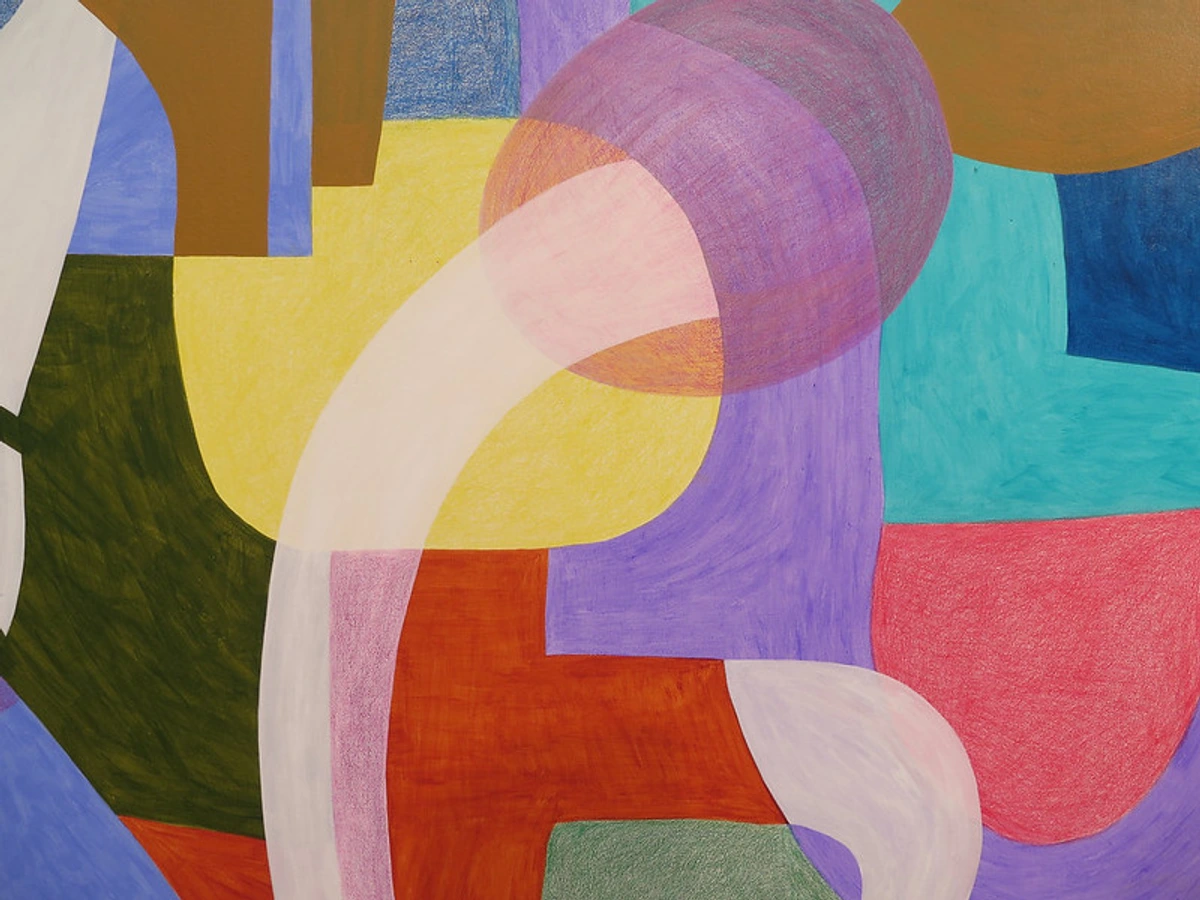
https://www.flickr.com/photos/42803050@N00/31171785864, https://creativecommons.org/licenses/by-nd/2.0/
Mijn Liefdesaffaire met de 'Tussenkleuren': De Taal van Diepte en Emotie
Een puur, cadmiumrood schreeuwt. There’s a time and a place for shouting, of course. Maar een diep, roestig bordeauxrood—gemengd uit dat rood met een vleugje zwart en een fluistering van zijn complementaire groen—it vertelt een geheim. Het heeft een leven geleefd, perhaps weathered a few storms, known some quiet joys. It's the color of old, beloved leather, or the rich earth after a rain. This magic often happens when you invite a whisper of a complementary color into the mix—just enough to push a hue towards that sophisticated desaturation, that 'lived-in' feeling, without completely neutralizing it. It’s a delicate balance, a conversation between opposites, yielding something entirely new.
Secundaire en tertiaire kleuren zijn de taal van nuance, de fluisteringen van complexiteit en diepte. Think about the difference between a bright, grassy green and a deep, muted olive green. One is a summer picnic; the other is a quiet walk in an ancient forest. Both are 'green,' but they tell completely different stories and create distinct senses of space—one flat and immediate, the other receding and mysterious. The nuanced greens of an ancient forest, the deep blues of a stormy sea, or the soft purples of a fading twilight aren't just colors; they're emotional landscapes that invite introspection and a sense of enduring history. Unlike the immediate impact of a primary, these in-between colors invite you to linger, to feel the layers of emotion they hold. They are also crucial for creating a sense of depth and perspective within an abstract composition; by varying their temperature and value, you can make elements appear closer or further away, creating an immersive, multidimensional space rather than a flat surface. This exploration of nuance is a huge part of de evolutie van mijn artistieke stijl and really, the entire trajectory of mijn artistieke tijdlijn.
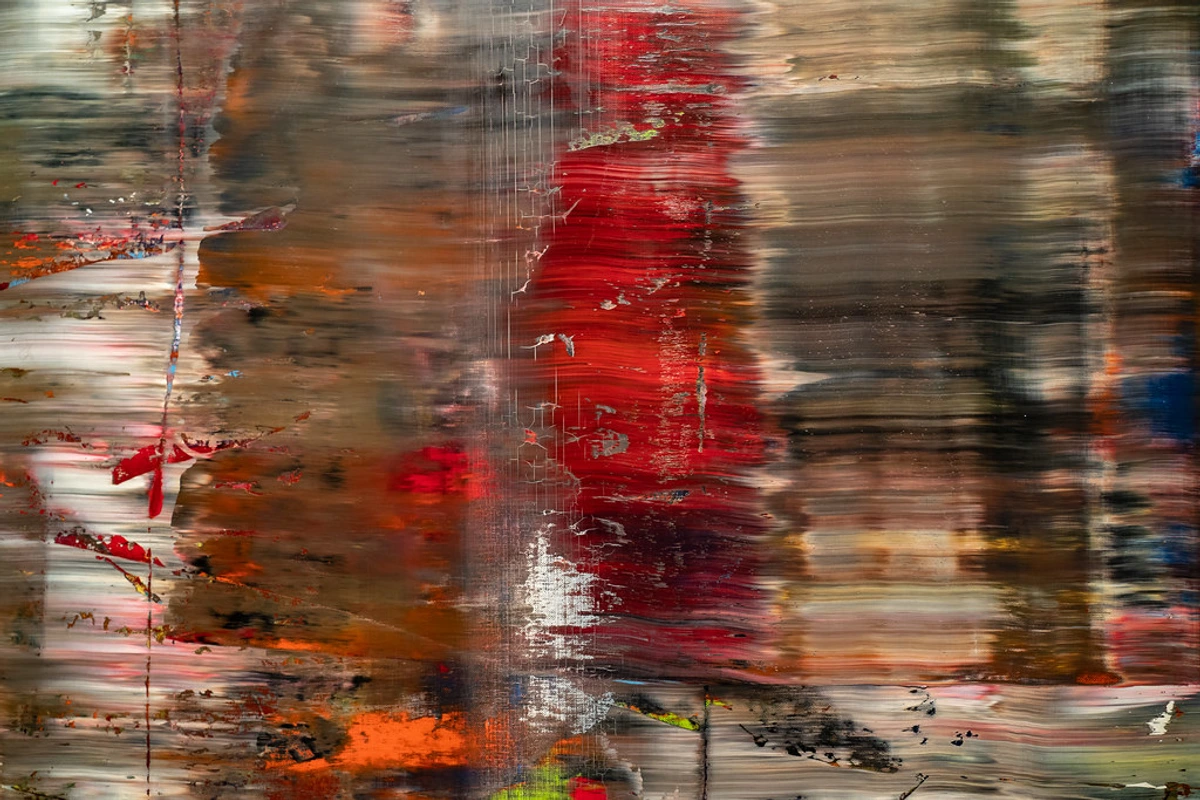
https://live.staticflickr.com/65535/53064827119_1b7c27cd96_b.jpg, https://creativecommons.org/licenses/by-nc-nd/2.0/
Deze kleuren creëren sfeer. They can be moody, dreamlike, earthy, or incredibly sophisticated. They are the colors of dusk, of stormy seas, of old leather and forgotten letters. They provide the emotional gravity that allows the brighter, purer colors to truly shine. Moreover, they are essential for creating sophisticated color harmonies that guide the viewer's eye gently through the composition, rather than jarring it with sharp contrasts.
Praktische Magie: Technieken Die Ik Gebruik om Nuance te Weven
So, how do I actually bring these deep, whispering colors to life on the canvas? It's a mix of intention and letting go. It's a dance.
![]()
https://www.rawpixel.com/image/5924320/photo-image-background-public-domain-art, https://creativecommons.org/publicdomain/zero/1.0/
Lagen en Glaceren
I rarely put down a single, flat color. My surfaces are built from many thin, often translucent, layers. A thin glaze of transparent yellow oxide over a dry patch of ultramarine blue doesn't just make a flat green; it creates a green that seems to glow from within, a green that has a history unfolding before your eyes, creating a luminous, shimmering effect through a phenomenon known as optical mixing. This is where your eye, rather than the paint on the palette, blends the translucent layers from a distance, creating a new, vibrant color sensation. Each layer is a whisper, and together they form a conversation, a gradual reveal. This is the core of my process, which I explore more in my guide on diepte opbouwen in abstract acryl.
Modder is Niet de Vijand (Het is een Superkracht)
New painters are often terrified of making 'mud'. I get it. You mix too much and suddenly everything is a noncommittal brown. I certainly spent years trying to avoid it, often ending up with flat, uninteresting colors as a result. And believe me, I've had my share of truly disastrous mud baths on the palette – the kind that make you want to throw the brush across the studio and rethink your entire career path. There was this one time I was trying to mix the perfect dusty rose, and somehow, I ended up with a shade that precisely matched the sludge at the bottom of a rusty bucket. A truly humbling moment! But through those failures, I learned the alchemy. What people call 'mud' is actually controlled desaturatie – a nuanced reduction in chroma (the intensity or purity of a color). This opens up a world of sophisticated neutrals and muted tones that are essential for creating depth and atmosphere. A key trick here, and one I wish someone had told my younger, mud-phobic self, is to start with a limited palette for your mixing. Too many pure pigments on the go can indeed lead to chaos. And consider developing a 'master palette' for your neutrals, a consistent mix you can always return to for grounding your compositions. For example, a reliable base for my neutral 'greys' is often a mix of Ultramarine Blue, Burnt Sienna, and a tiny touch of Cadmium Yellow. This combination works beautifully because Ultramarine Blue and Burnt Sienna (which leans orange) are near-complements, creating a rich neutral when mixed. The Cadmium Yellow then offers a slight, subtle warmth, preventing the grey from becoming too cold or stark. Imagine taking a vibrant blue and just a tiny, tiny speck of its complementary orange, and mixing them. You don't get 'mud' in the bad sense; you get a profound, greyed-out blue, a stormy sea blue, perhaps, or the color of ancient stone. It’s that controlled 'mud' that makes a single sliver of bright turquoise sing like an opera star. It’s the quiet that makes the loud meaningful.
De Onvoorspelbare Vreugde van Nat-in-Nat
Sometimes, the best colors are happy accidents. They happen when a bit of orange still on the brush contaminates the blue I was reaching for, creating a streak of unexpected slate-grey. It's a surrender, a letting go. Wet-on-wet werken stelt kleuren in staat om zich op het doek te vermengen en hun eigen tertiaire tinten te creëren, often leading to surprising, organic gradients and blends you could never pre-plan. It's a process of letting go and trusting the paint, allowing the material itself to contribute to the evolving narrative of the piece. It's a huge part of my belief in spontaniteit omarmen in abstracte creatie.
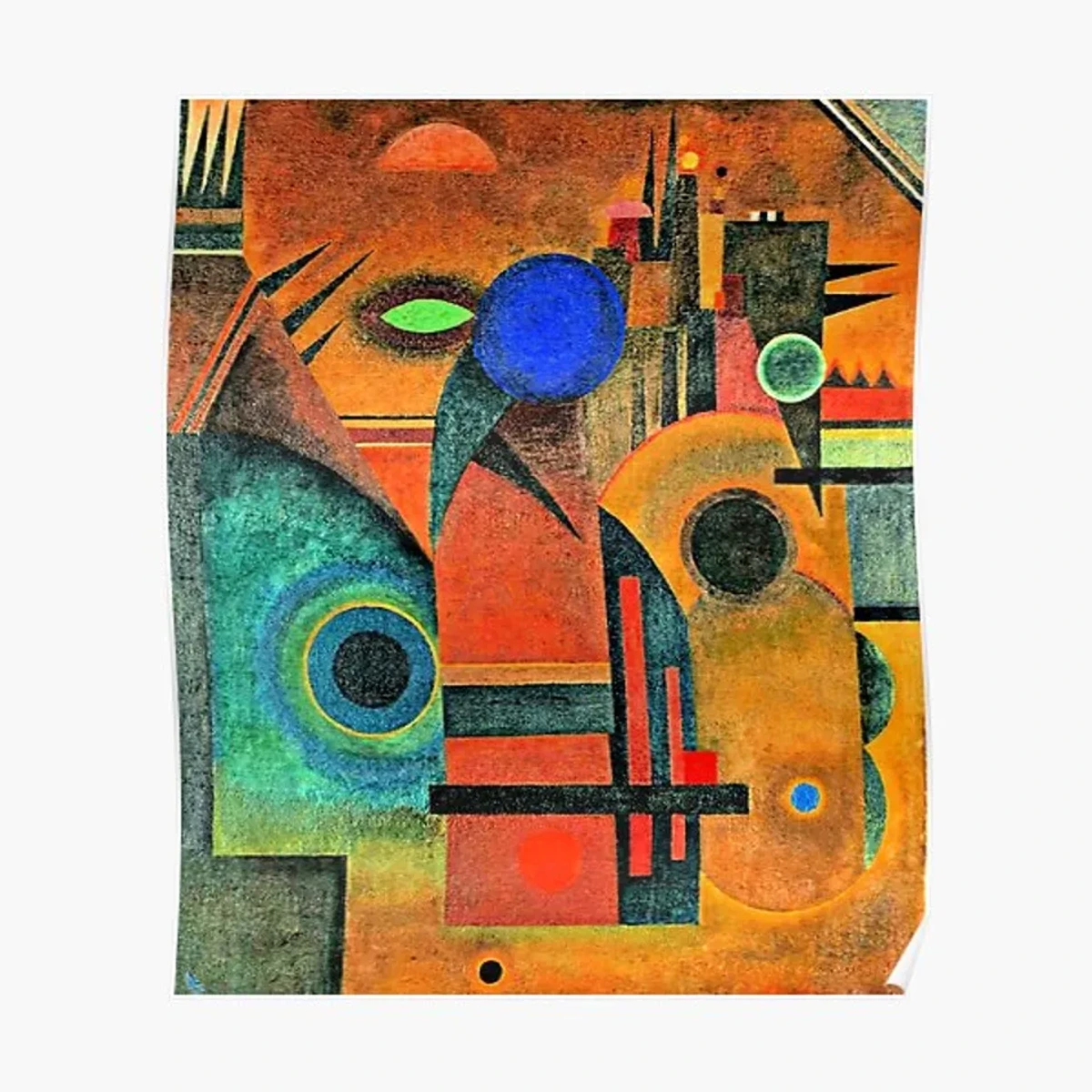
Printerval.com, https://creativecommons.org/licenses/by-nc/4.0/
So, what subtle hues are you feeling drawn to explore in your next creative venture?
Casestudy: Een Palet Ontleden
Laten we een van mijn schilderijen voorstellen. From a distance, you might see a lot of grey and blue. But if you look closer, you'll see I don't own a tube of grey paint. That 'grey' is actually a complex mix of ultramarine blue, a dab of burnt sienna, and a tiny fleck of alizarin crimson. It’s a living grey, one that shifts from cool to warm, revealing hints of its fiery or earthy origins as your eye moves across it, almost breathing with subtle temperature changes. And that muted teal? It's not straight from the tube either. It's a careful blend of phthalo blue, a touch of yellow for green, and a whisper of its complementary red to desaturate it and give it that aged, contemplative quality. Every color choice is a feeling, a memory. It’s a story told not just in hue, but in temperature, value, and saturation. It’s really mijn palet, mijn verhaal. Welke 'levende grijzen' of gedempte petrolkleuren zouden jouw verhaal kunnen vertellen?
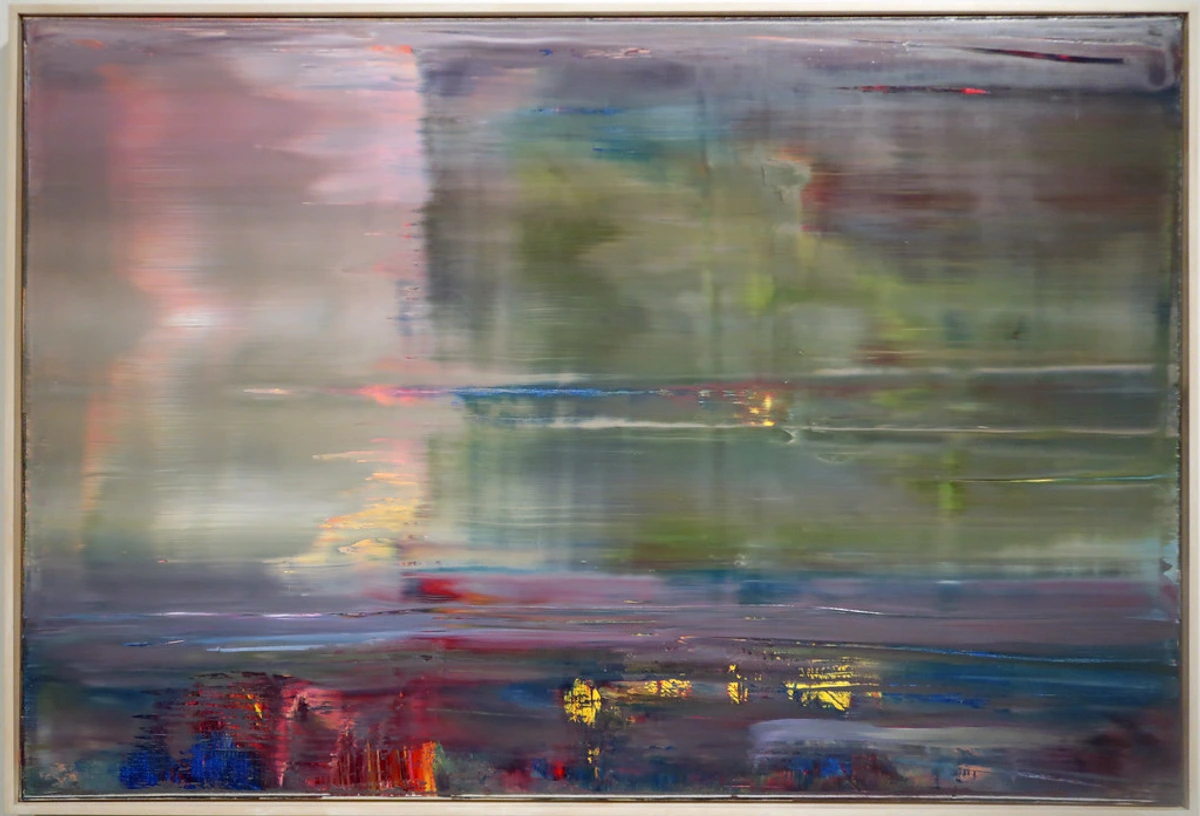
https://live.staticflickr.com/65535/51907566658_1100dbeb2a_b.jpg, https://creativecommons.org/licenses/by-nc-sa/2.0/
Buiten de Studio: Hoe Je Complexe Kleur Kunt Zien en Gebruiken
Once you start seeing this way, you can't stop. You'll notice the complex violet-grey in a storm cloud, the rich ochre in a city puddle, the subtle sage green on a weathered door, the surprising spectrum of blues and purples in a pigeon's feather, the iridescent sheen on a raven's wing, or the myriad shifts of ochre and rust on an ancient, weathered stone wall. It changes how you see the world. And if you’re looking to truly connect with art that mirrors the complexities of life, that invites introspection rather than just demanding attention, this is the palette to seek. A painting that leans into these nuanced, complex shades can bring a quiet, sophisticated, and calming energy to a room that a loud blast of primary colors just can't. It invites contemplation, a deeper relationship with the artwork.
Of course, working with these complex hues isn't without its challenges. There's a fine line between sophisticated nuance and simply dulling your palette. The trick is always intentionality—knowing when to pull back and when to push a color into that rich, desaturated realm, ensuring it still sings its own quiet song without becoming muted to the point of silence. If you're interested in kleurrijke abstracte kunst integreren in je interieur, thinking about these palettes is a great place to start.
Many artists through history, from the Impressionists who masterfully used nuanced hues to capture the ephemeral, shifting effects of light and atmosphere, often depicting subtle changes in landscapes or urban scenes; to the Fauvists who, paradoxically, played with surprising and intense color combinations to evoke raw emotion and break from naturalistic representation, yet often through the interplay of bold and slightly muted tones; and certainly many Abstract Expressionists like Mark Rothko or Clyfford Still, masterfully leveraged these complex, in-between hues to evoke profound emotional states and atmospheric depth. They understood that the most compelling stories often aren't shouted, but rather, whispered through layers of subtle color and deep feeling.
![]()
https://www.rawpixel.com/image/3894575/illustration-image-art-vintage, https://creativecommons.org/publicdomain/zero/1.0/
If you're curious to see how I use these principles, you can always browse the pieces currently available in mijn online galerie. Perhaps one speaks to your own quiet complexities.
FAQ - Jouw Vragen Over de Tussenkleuren
Moet ik een miljoen tubes verf kopen om tertiaire kleuren te gebruiken? Absoluut niet! The opposite is true. Start with a limited palette—a warm and cool version of each primary color, plus white and a dark neutral like Payne's Grey or Burnt Umber. The beauty of tertiary colors is in the mixing. You discover them.
Hoe voorkom ik dat alles bruin en modderig wordt? Angst voor 'modder' is gewoon, but it's often a sign you're on the cusp of understanding sophisticated color. To avoid accidental muddying while learning, try these tips:
- Beperkt Palet Eerst: Resist the urge to use too many pure pigments at once. Begin with just a few primaries and experiment with their secondary and tertiary mixes.
- Kleine Hoeveelheden: Mix small quantities of paint. It's easier to adjust or discard a small mix than a large one.
- Schoon Gereedschap: Clean your brush or palette knife thoroughly between color additions. Contamination is a primary culprit for unwanted mud.
- Aparte Mengruimte: Instead of mixing directly on your canvas, use a separate palette. This gives you more control over the outcome before applying it to your artwork.
- Omarm Gecontroleerde Desaturatie: Understand that 'mud' in the negative sense often comes from uncontrolled mixing of too many pigments that neutralize each other. Intentionele desaturatie is echter jouw superkracht for creating complex, muted tones. Learn to add just a tiny speck of a complementary color or a neutral to reduce a color's chroma (purity) without making it dull. Remember, those complex neutrals are your best friends, especially when you understand how to control their richness and subtle shifts.
Zijn secundaire en tertiaire kleuren minder impactvol dan primaire kleuren? Ze zijn niet minder impactvol; they are anders impactvol. A primary color is an immediate, bold statement—a shout. It grabs attention. A secondary or tertiary color, however, is a compelling whisper that makes you lean in closer to hear what it has to say. It creates a subtle, sustained emotional resonance, inviting contemplation and revealing its depth over time. Think of primary colors as pop music, and secondary/tertiaire colors as jazz—both impactful, but in very different, profound ways. They add a layer of sophistication and narrative complexity that pure primaries often cannot achieve alone.
Hoe kunnen secundaire en tertiaire kleuren me helpen specifieke stemmingen in mijn kunst te creëren? Secundaire en tertiaire kleuren zijn jouw emotionele gereedschapskist! To evoke a serene, calming mood, lean into cool, desaturated blues and greens – think muted teals or soft grey-greens. For a sense of warmth, energy, or groundedness, explore earthy oranges, rusty maroons, and deep yellow-greens. By controlling their temperature (warm/cool) and value (light/dark), and adjusting their chroma (saturation), you can fine-tune the emotional impact. For instance, a high-value, cool blue-violet can feel dreamy and expansive, while a low-value, warm red-orange can feel intimate and intense. It's all about intentional mixing to create that specific emotional landscape.
Een Laatste Gedachte
De primaire kleuren zijn het alfabet. Ze zijn essentieel, fundamenteel. Maar de secundaire en tertiaire kleuren zijn de woorden, de zinnen, de poëzie. Zij zijn waar communicatie kunst wordt, waar emoties verdiepen en waar stille verhalen zich ontvouwen op het doek.
So next time you pick up a brush, or just look at the world around you, I encourage you to look past the obvious, bright heroes. Fall in love with the beautiful complexity of the in-betweens. That’s where the best stories are hiding, where the deepest feelings reside. That’s where I’ll be. If you ever find yourself near my hometown of 's-Hertogenbosch in the Netherlands, I hope you'll consider visiting mijn museum, where you can see these colors in person.
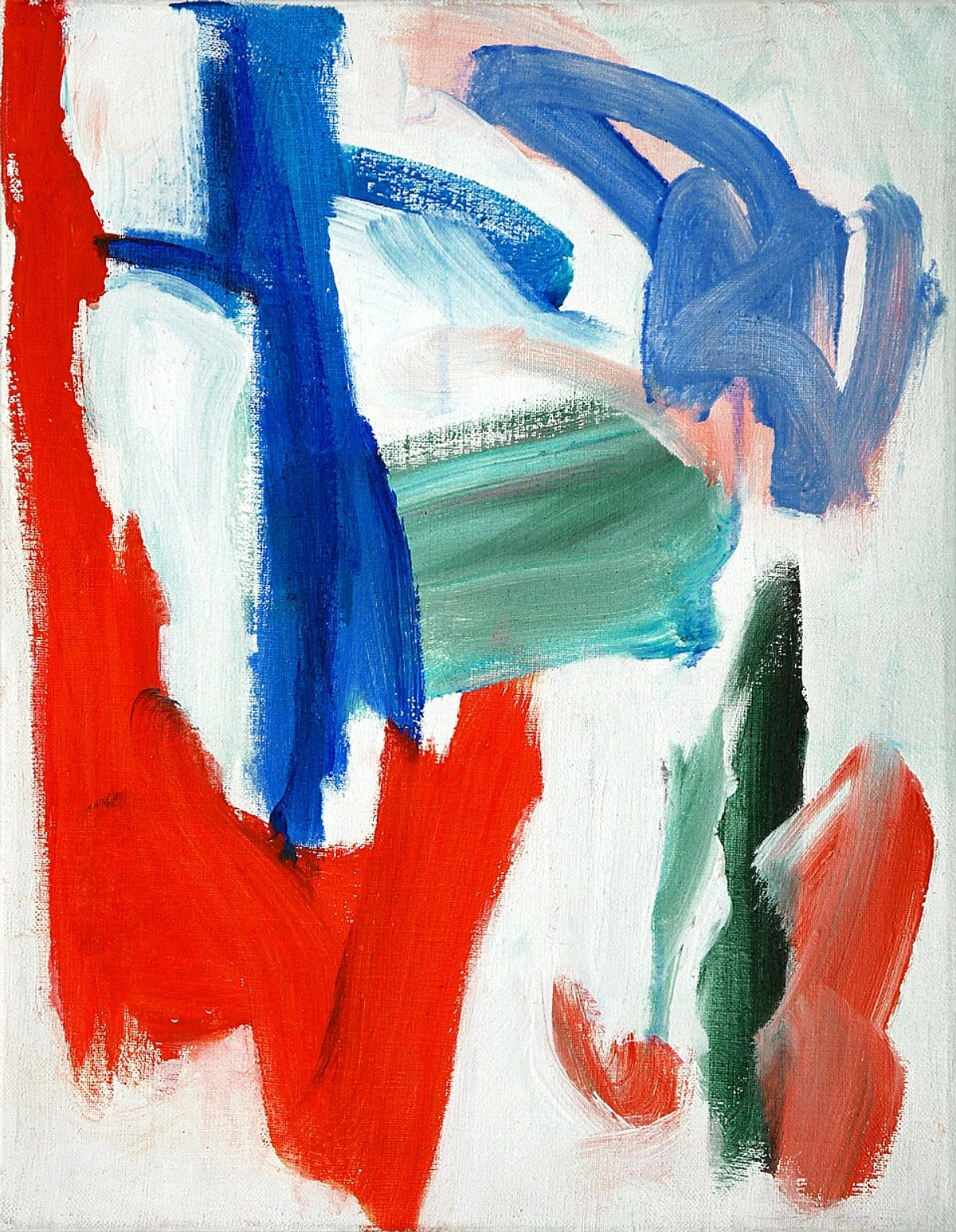
https://commons.wikimedia.org/wiki/File:%27Abstract_sky%27,1993-_small_acrylic_painting_by_Dutch_artist_Fons_Heijnsbroek;_free_download_abstract_art_image,_CCO.jpg, http://creativecommons.org/publicdomain/zero/1.0/deed.en




